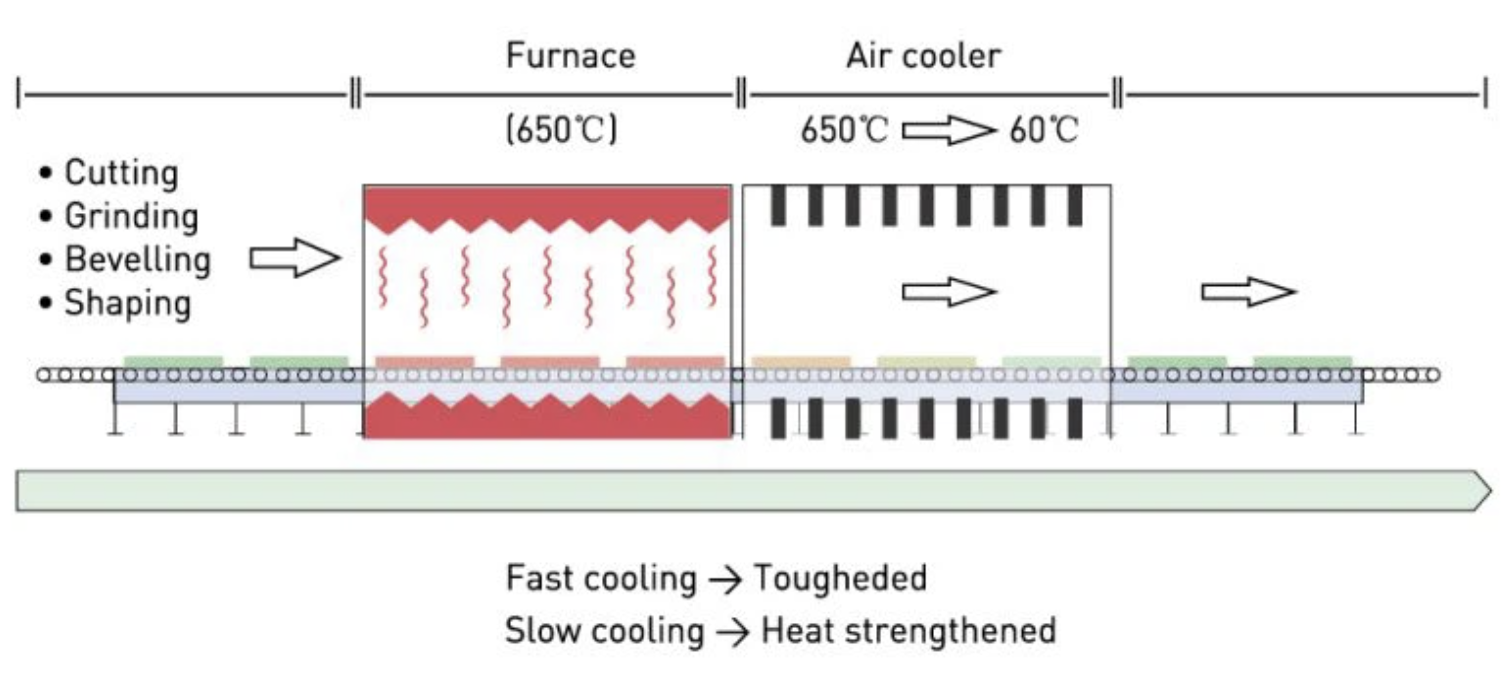Glass tempering furnaces play a critical role in the glass manufacturing industry, enabling the production of durable, high-quality tempered glass. As we enter 2025, advancements in technology, design, and energy efficiency have made these machines indispensable for industrial applications. In this guide, we’ll explore the fundamentals of glass tempering furnaces, their equipment and processes, and the latest innovations shaping the industry.
What is a Glass Tempering Furnace?
A glass tempering furnace, also known as a tempering oven, is an industrial machine used to strengthen glass through a controlled heating and cooling process. The furnace heats the glass to a temperature between 600°C and 700°C, followed by rapid cooling with high-pressure air. This process induces compressive stress on the glass surface and tensile stress inside, resulting in tempered glass, which is more resistant to impact and thermal stress than ordinary glass.
The Glass Tempering Process
The glass tempering process involves several stages:
- Loading: Flat or shaped glass is loaded onto a conveyor system, typically equipped with ceramic rollers to ensure smooth handling and prevent surface damage.
- Heating: The glass passes through a heating chamber, where infrared or convection heating raises its temperature uniformly. Modern glass tempering machines feature advanced control systems for precise temperature regulation.
- Quenching: After heating, the glass is rapidly cooled using high-velocity air from cooling blowers. This stage creates the characteristic strength of tempered glass.
- Unloading: The tempered glass is unloaded and inspected for quality, ensuring it meets industry standards for safety and durability.
Types of Glass Tempering Furnaces
Designed for processing flat glass, this type is widely used in architectural applications, automotive industries, and interior design. These furnaces ensure uniform heating and quenching to produce high-quality flat tempered glass.
2. Bent Glass Tempering Furnace
This furnace is specialized for shaping glass into curved forms. It’s commonly used in manufacturing glass for vehicles, furniture, and decorative applications.
3. Continuous Glass Tempering Furnace
Ideal for high-volume production, this furnace operates on a conveyor belt system, allowing glass to pass through the heating and quenching stages without interruption.
4. Horizontal Glass Tempering Furnace
A popular choice for industrial applications, this furnace processes glass in a horizontal position, minimizing optical distortion and ensuring high precision.
Key Features of Modern Glass Tempering Furnaces
- Advanced Control Systems: Modern furnaces come equipped with digital control systems that offer real-time monitoring and precise adjustments for temperature, air pressure, and conveyor speed.
- Energy Efficiency: Innovations in furnace design have significantly reduced energy consumption, making operations more sustainable and cost-effective.
- Quality Insulated Chambers: High-quality insulation materials minimize heat loss, ensuring consistent temperatures and energy efficiency.
- Ceramic Rollers: Durable and heat-resistant, these rollers prevent glass scratches and improve product quality.
- Versatility: Modern furnaces can handle a variety of glass types, including flat glass, bent glass, and coated glass.
Benefits of Using a Glass Tempering Furnace
- Enhanced Strength: Tempered glass produced by these furnaces is up to five times stronger than untreated glass.
- Safety: In the event of breakage, tempered glass shatters into small, harmless pieces, reducing the risk of injury.
- Versatility: Suitable for a range of applications, from windows and doors to automotive and electronic displays.
- High-Quality Output: With features like ceramic rollers and precise control systems, modern furnaces ensure consistent quality.
- Energy Savings: Reduced energy consumption makes these furnaces an eco-friendly choice.
Leading Glass Tempering Furnace Manufacturers
The global market is home to several high-quality manufacturers specializing in glass tempering machines:
- Suppliers of flat glass tempering furnaces for architectural applications.
- Companies offering bent glass tempering furnaces for automotive and decorative needs.
- Providers of continuous glass tempering furnaces for industrial-scale production.
When choosing a manufacturer, consider factors like energy efficiency, equipment design, and after-sales support.
The Future of Glass Tempering Furnaces in 2025
As technology evolves, glass tempering furnaces continue to improve in efficiency, precision, and sustainability. Emerging trends include:
- Smart Control Systems: Integration of IoT and AI for predictive maintenance and automated adjustments.
- Lower Energy Consumption: Innovations in insulation and heating elements to further reduce operational costs.
- Custom Designs: Furnaces tailored for specific industries and applications, such as solar panels and display technologies.
 Conclusion
Conclusion
The glass tempering furnace is an essential tool for producing durable, high-quality glass. From flat glass tempering furnaces to bent glass tempering furnaces, these machines cater to diverse industrial needs. As we move into 2025, advancements in design, energy efficiency, and control systems will continue to redefine the glass manufacturing landscape, ensuring the production of reliable and sustainable tempered glass solutions.
 Conclusion
Conclusion








